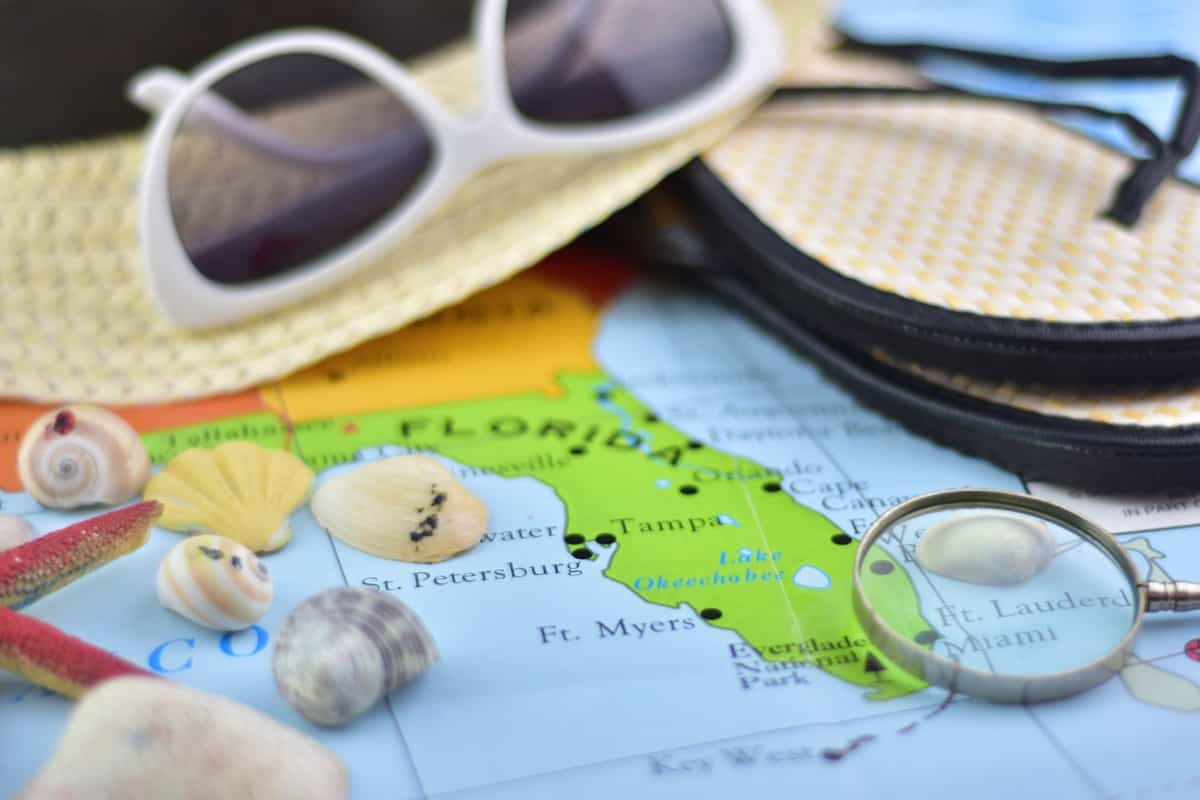Many yuccas grow and flourish in Florida, a state with a subtropical climate, light winters, and plenty of sunshine.
The best yuccas to grow in Florida are Spanish Bayonet, Spanish Dagger and Adam’s Needle. These yuccas are native to Florida and have adapted to Florida’s environment. Although a few pests eat yuccas, the hot weather encourages growth and helps these yuccas thrive.
Florida has many great natural resources that help make yuccas a low-maintenance plant. Still, a few natural conditions harm these yuccas.
Yuccas Native to Florida
Florida’s environment is excellent for yuccas as the sun encourages growth. These enduring drought plants need little care from people as Florida’s sun, and well-drained soil help yuccas grow. If you’re growing yuccas in a pot, you’ll want to use potting soil mixed with perlite and or horticultural sand.
The U.S. Department of Agriculture has designated Florida as an eight to eleven agriculture zone. Yuccas grow best in agriculture zones seven to nine but will grow in other zones with care. During the hotter months, a yucca may need extra water. However, yuccas love Florida’s hot, sunny days, but if the weather becomes cold, a yucca will survive a frost and freezing temperature for a day or two.
Many yuccas are native to Florida and have adapted to the harsh conditions of their native home. Therefore, native yuccas are the best yuccas to grow in Florida since the surrounding environment provides for these yuccas. For example, the Spanish Bayonet, Spanish Dagger and Adam’s Needle are native to Florida and have adapted to live in Florida’s climate.
These yuccas are desert plants with thick skin to protect the yucca from burning in Florida’s sun. In addition, these yuccas need little water from humans as the environment will provide water through rain and humidity.
Yuccas will appear greener and have fewer brown tips and edges on the leaves if watered once every ten days or when the soil is dry. Florida’s soil is sandy and full of rocks, providing good drainage to prevent the yucca’s roots from becoming waterlogged.
Hey, you’ll like this one too: Are Yuccas Expensive
Spanish Bayonet (Yucca Aloifolia)
Spanish colonists planted these yuccas along defensive lines around the settlements of St. Augustine. The sharp leaves kept the enemies out, giving them the name Spanish Bayonet. The leaves grew up to two feet while growing on a stem that reaches 15 feet tall and eight feet wide.
These spiky green plants often fall over due to their weight yet continue to grow new stems that grow upward. Spanish Bayonets must have sun all year and thrive on high temperatures and need little water.
Spanish Dagger (Yucca Gloriosa)
Named after the knife-like leaves, Spanish Daggers grow up to 12 feet and bloom once a year when fully grown. The creamy white flower with purple tenges will bloom in the late spring and early summer. These flowers and the bold structural element of this yucca are why Spanish Dagger is often used in landscaping.
However, when planting Spanish Dagger, keep the yucca away from paths to prevent the sharp leaves from injuring others.
Adam’s Needle (Yucca Filamentosa)
Growing up to eight feet tall, this yucca was named after the yucca’s needle-like leaves and thread-like filaments. These leaves take in Florida’s sun, need little water from humans, and grow in the sandy, rocky soil. This environment also creates a chance for white bell-like blooms in June and July every year when the yucca is fully mature.
Adam’s Needle is known to have many uses, many of which were discovered by the Native Americans. For example, the roots were crushed and thrown into waterways to stun fish, making them easier to catch. The leaves were also used to make soap.
Hey, you’ll like this one too: Best Yucca in South Carolina
Negative Effects of Florida on Yuccas
Florida’s hot sunny days are one of the many reasons yuccas grow splendidly in Florida, as yuccas need an extraordinary amount of sun since they are desert plants. Sunlight is great for yuccas, but yuccas do need some water to help them thrive during the hotter months.
Unfortunately, the heat also provides great living conditions for pests, such as mealybugs and weevils. These will eat or harm the yucca. Removing these pests by picking them off by hand or other methods is important for the growth of a yucca.
Too much humidity will also harm yuccas as humidity places excessive water in the soil. Unnecessary water harms yuccas because yuccas are drought tolerant and have adapted to need little water. Too much water causes rot. As a result of the humidity, you should be careful not to overwater.
Well-drained or sandy soil is vital to prevent yucca roots from becoming waterlogged and developing root rot. This is why swampy or moist areas of Florida are not an ideal spot for any yucca in the ground. To prevent moisture from killing these yuccas, planting in a pot with well-drained soil allows the yucca to thrive.
Conclusion
Adam’s Needle, Spanish Bayonet and Spanish Dagger are the best yuccas to grow in Florida since they are native. The sunny days, hot weather and mild winters make a great environment for these yuccas. Although there are a few pests and a few areas too wet for yuccas, potting the yuccas is an excellent alternative to allow them to thrive.

